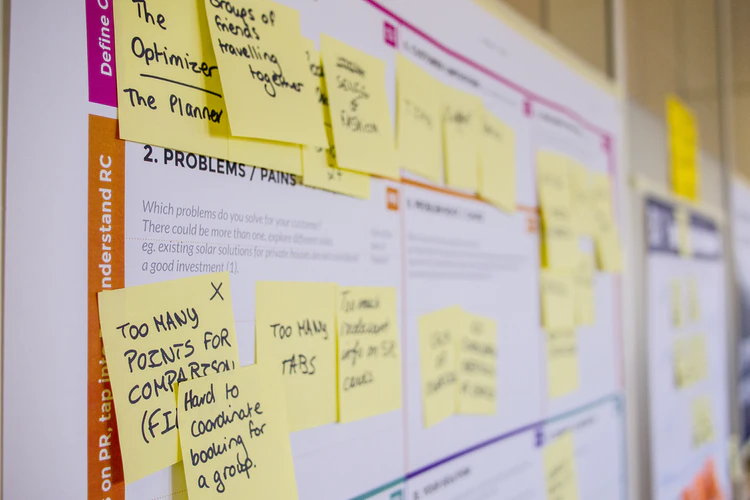Customer experience research is now no longer an option, but a must. Why?
Do you want to return and keep purchasing products or services from a company that treated you poorly?
Maybe no one does.
The feeling or experience that a customer/user had after interacting with companies undoubtedly exerts a large influence on his/her decisions to come back for buying in the future or recommending the businesses to his/her friends. While a great experience offers the customers a sense of satisfaction and happiness, poor interactions could result in his/her disappointment or even haste towards business and eventually stop interacting with the company ever again.
Customer experience is the new battlefield in the market today. A study conducted by SuperOffice indicated that around 88% of corporates now put customer experience at the top of their agenda. And as a result, when everyone is investing in that field to boost their businesses, that’s where you need to be outstanding. But how to start investing and compete on this competitive battlefield?
Many may reckon that it’s only customer experience optimization, strategies, or tracking tools that matter. But the real answer, agreed on by a lot of CX professionals, is customer experience research. What are the reasons? Let’s find out below.
Table of Contents
What is customer experience research?

Scott Anderson, chief marketing officer at Intermedia cited a study conducted by Medallia Research. This indicated that more than 70% of US consumers said that if brands can satisfy or exceed their expectations, their loyalty to such brands could increase three-fold. On the contrary, if encountering bad interactions, they would switch brands afterward.
These statistics cited above showed a fact that: launching a good product or service only accounts for a minor part of a thriving business. In today’s competitive world of mass users, companies need to focus on enhancing the quality of every interaction with customers along with their buying journeys. But companies can’t just sit idle in a room and discuss the quality of every touchpoint they provide customers. They also can not just “think” and “guess” about how customers feel or reckon about their interactions with the company: are they satisfied or not, if not, what are the reasons, how to solve the problems that customers are facing, etc.
As with most things, realities and consciousness are often very different. That’s why the company must conduct a thorough process of collecting and analyzing any type of data that’s relevant to the experience their customers had when interacting with their companies. Such processes are called customer experience research. In short, the term customer experience research is used to describe a sum of continuous practice of using a various range of tools for collecting, systemizing, and analyzing all the data that reflects the experience of customers when interacting with companies on their decision-making processes.
Each time a customer contacts the customer service room, visits a business’s websites, watches the product’s advertisements, speaks with a salesman, or every time they communicate or interact with the company is a precious opportunity for the company to carve into their customers a long-lasting impression. It’s best when these interactions are boosting loyalty and positive. But even when they are unwantedly negative ones, they can be a guide for the company to figure out solutions. Business need to collect feedback to know with which touchpoint is bringing good signal and which doesn’t.
The eventual goal of such research is to finally make changes if needed in the regular customer management procedure of the business by understanding consumers’ expectations and pain points better and utilizing these precious data to enhance the quality of every touchpoint or facilitate the consumer experience optimization.
What is consumer experience analysis?
In the two phases comprising comprehensive customer experience research: collecting and analyzing, the second phase “analyzing” is the most important and should be concentrated more to ensure a smooth-progressing consumer experience research process.
Customer experience analysis is a term coined for a method used to measure whether a product or service of a company satisfies consumers’ expectations or not. “Brands are built or broken on how well a company fares with a customer over a lifetime of interactions, customer experience analysis is the act of gauging success (or lack thereof) against the criteria that an audience finds most important,” said Scott Anderson, CMO at Intermedia.
According to Gopal Sripada, product marketing leader at Zoho CRM, there are two main factors that companies should bring into consideration when conducting CX analysis. It’s “understanding customers’ needs so that brands can provide them with personalized and customized messages”, and “ensuring that the customer experience is collected at every touchpoint and analyzed systematically.”
Why customer experience research matters?
In today’s competitive market, customer experience is becoming a vital competitive advantage for every business that wants to compete and thrive. Due to the widespread use of social media and other communication devices as well as platforms, a single negative experience and feedback could be distributed in an extremely short time to an enormously wide range of people, which causes immense harm to the business. On the other hand, positive reviews and feedback could bring loyalty and recommendation from customers.

In today’s competitive market, customer experience is becoming a vital competitive advantage for every business that wants to compete and thrive. Researching and analyzing customer experience carefully and systematically can gain the business precious insights of their target customers and provide them with a better comprehensive understanding of customers’ expectations, needs, and pain points. Equipped with these data, companies can construct strategies and plans to build a customer journey map that offers effective touchpoints and qualified interactions that satisfy all the customers’ needs and develop a customer-centric business model – a model that could assure the position of the brand in this world of mass consumerism.
How to conduct customer experience research: The basics
Customer experience research is a certain type of market research, so it bears most characteristics and requirements of normal market research. Bearing that explanation in mind, consumer experience research also starts with understanding the objectives of the research, identifying the main target audience of the research, and the research would be conducted using what tools and on which channels.
Determine the scope and objectives of the research
What is your ultimate goal with the research? What questions do you want to raise? The research is conducted to collect what kind of data? On what channels? The beginning point of successful research is a pure clear aim and defined questions. In this first phase, you could answer questions like “What may be the problems of my business at the moment? How my research could help to shed light on solving those problems? The data collected would be analyzed in which ways? etc”. Answering these questions would give you a clearer understanding of the purpose of your research and these objectives will also be a thorough guideline throughout your research process.
Research can also have various scopes. For example: if you are questioning the effect or qualities of touchpoints you installed on the business’s websites. The range and scope of the research you should conduct on such websites would be different from research that is conducted to collect data on customer experience in an omnichannel or cross-channel commerce campaign. Note to state specifically whether you want to research in a certain range or if you want to zoom out and consider your interactions from a broader viewpoint.
Select a key metric to focus on
There are many metrics that matter in evaluating customer experience satisfaction levels. For example, some companies like Net Promoter Score (NPS) evaluate your users by ranking them as successively promoters (those who would recommend the brand), passives (those who are neutral), and detractors (those who have problems with their experience). Other options are Customer Satisfaction (CSAT) and Customer Effort Score (CES). Among those, the two most important metrics that influence the whole research process and decide if the business would go robust or not are customer satisfaction level and customer engagement level, which affect each other and vice versa.

Customer satisfaction is a metric to assess the state of satisfaction of a customer after interacting with brands at a certain touchpoint or a wide range of touchpoints on their journeys. This can be defined as an instant measurement of experience from something as interaction with a salesman – the brands’ representative to the comprehensive feeling of customers when being satisfied with their needs or expectations. Many argue that this is the beginning point for every standard customer research process.
Customer engagement, on the other hand, is a metric that captures the long-term impression and love of the customers towards the brands, which is constructed on satisfying customers’ expectations constantly on a consistency. This metric is collected by measuring things like loyalty to the brand or how likely the customers are to introduce the brands or products to their friends. This arguably should be paid more focus on than the customer satisfaction metric mentioned above because customers with higher engagement levels are more likely to tolerate the occasional experience that may not live up to their former expectations of the brands.
To take huge technology industrial corporations as stand out examples: global brands like Samsung and Apple always have a range of loyal consumers or users that will keep buying their latest products and voluntarily promote their advantages to friends, even when sometimes the product may fall short of their former expectation and the brands didn’t satisfy their needs (the new products that are even overall worse than old ones or launching a smartphone without available charge). That’s what a boosted customer engagement level could do for your brand and business as well.
>> Must read: What Is Customer Experience Journey & Why is It Important?
Draw a customer journey map
The goal of the research is often to solve a problem or improve a section in a customer journey. In order to do that, companies should first identify the most important customer journeys that the business is paying focus on. These may be the most valuable or profitable products or services that the company offers. Then you should create an exact map of each journey and figure out which areas that need to improve using data collected from the research process.
Identify the most important customer journey
This is the stage where you, who conduct the research should draw, onto the paper, the customer journey in your mind – what you think that your business’s customer journeys may look like. These assumption-based maps can be effective for you to prepare your research in advance. You should spend time with your team to sketch out as many journeys as possible that match up with your top priority business goal. For companies that provide a diverse range of products, this number might include dozens. And when you’re done, discuss again and choose only one journey to work on. You must decide which one to focus on since customer journeys can only be optimized for a single goal.
Map out the customer journey and personas

Creating journey maps or personas of customers requires digging deep into data collected from different departments in the company or information and knowledge from customers through analytics, CRM databases, and statistics in history. It’s no doubt that creating personas and thorough journey maps of customers require much more effort and resources.
When finished the journey mapping phase, your business should have an experimental map of each successive step your customer takes towards their goal. Now with a customer journey map and personas, it’s time to leave your room, jump to the streets and start to ask actual users about their experience and for feedback. There are more than one ways to uncover this information, but it’s recommended that you conduct qualitative research to start. Below are some useful research methods at this stage:
Surveys
This is an old-but-gold qualitative method, in which you provide your target audience with a questionnaire in digital or paper form, which includes a range of questions about the issue that you are conducting research on. While this format of research holds certain merits such as making data and respondents comparable. It sure has some disadvantages, for example, the respondents can only answer the questions asked without adding any information. There are some challenges that come with this method such as: how to ask the right questions, how to ask the questions right, etc.
Interviews
Another effective method of qualitative research is interviewing, in which participants are asked to share their own opinions on specific issues or experiences. While this measure can assure efficiency, it’s also very time-consuming and cost-intensive. Also, the interviewer could influence the situation and indirectly alter the answers of participants.
Observation
With this method of collecting data, the researchers often come to fieldwork to watch and note down the behaviors of participants in a certain situation and environment. Unlike interviewing while the interviewer could impact the answer, this measure could ensure the complete objectivity of the participants attending the research.
Conclusion
On the whole, the importance of customer experience is influential and mission-critical for each company. In addition, this is a very sensitive issue that needs a thorough customer experience strategy, which can only be facilitated through precious insights and data collected in the customer experience research process. That’s why the CX research field is very worth investing in. And finally, grasping this strategy in business, surely the company will achieve success as expected.











